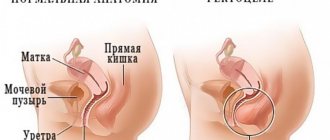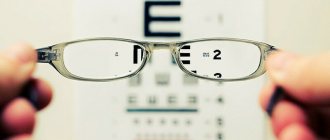Menstrual cups are considered the most modern hygiene product today. However, not everyone knows what it is, how to use it and why to do it. To understand the advantages, disadvantages and features of cups, we asked a gynecologist.
What is a menstrual cup?
A menstrual cup, or as it is also called a menstrual mouthguard, is a special hygienic device made of medical silicone in the shape of a cup. It is installed in the vagina, thanks to the softness of the material, it fits tightly to the body and allows you to collect all the menstrual flow.
You can use the cup without removing it for up to 12 hours. At the same time, it is much more comfortable than pads and tampons. In addition, it allows you to significantly save money, because one menstrual guard can be used for up to 10 years.
Menstrual cup - pros and cons
A hygienic cup for women is becoming a popular hygiene product. However, there are still those who prefer to use classic intimate hygiene products (tampons, pads). Each of these means has its own advantages and disadvantages. The main advantages of a menstrual cup are its reusability and safety.
The devices are made of medical grade silicone, do not cause allergic reactions, are easy to process and can be used for years. Cost-effectiveness is another one of the main advantages of the bowl, however, these devices also have some disadvantages. Below are the main pros and cons of a menstrual cup.
Menstrual cup - pros
A hygienic menstrual cup is a significant budget saver and environmentally friendly. A lot of money is spent on the constant purchase of sanitary pads and tampons. In addition, these hygiene products cannot be recycled, and the decomposition time of the material from which they are made is long. Given these features, more and more women, in order not to pollute the environment with additional waste, prefer a menstrual cup.
Other significant advantages of this newfangled hygiene product include:
- no unpleasant odor;
- dry and clean skin;
- possibility of long-term continuous use (up to 12 hours);
- complete feeling of comfort when used correctly.
Menstrual cup - cons
Among women, there are those who believe that the menstrual cup is harmful to the health of the reproductive system. Their beliefs are not unfounded. Incorrect placement of the cup and poor hand cleaning before insertion can cause infection. In addition, to use the device effectively, you need to practice a lot, which not everyone can do.
Other disadvantages of a menstrual cup include the following:
- You cannot freely remove and empty a thicket in a public place.
- High risk of leakage.
- Possibility of developing a reaction to a foreign body in the vagina.
- The need for careful hand hygiene during use.
Benefits of a menstrual cup
The reasons why women prefer a new hygiene device to a familiar one can be very different. However, to make the right choice, you need to know about all the advantages and disadvantages of menstrual trays. The product has many advantages:
- saving money - one cup costing from 400 to 3000 rubles can be used for 8-10 years without spending money on pads and tampons;
- environmental safety - thanks to the use of the bowl, the amount of discarded hygiene products, which take a long time to decompose, causing damage to the ecosystem, is significantly reduced;
- possibility of longer use - you can empty the bowl no more than once every 6-12 hours due to its capacity;
- does not contribute to the development of pathogenic organisms, since it collects secretions in a vacuum and does not absorb them (for example, when using a cup, the development of Staphylococcus aureus is impossible, so women who use modern hygiene products are protected from the development of the disease);
- by collecting rather than absorbing secretions, the cup allows you to keep the vaginal microflora unchanged;
- provided that it is installed correctly, the product does not cause physical discomfort;
- The menstrual guard is invisible under any clothing, you can even choose tight outfits.
What is a menstrual cup and what does it look like?
The menstrual cup is a new product for intimate feminine hygiene during menstruation. The name comes from the English “menstrual cup”, which in Russian acquired the consonant definition “menstrual cap”. The device is a barrier type of hygiene along with pads and tampons, but has a unique operating principle; it looks like a cap or a small silicone reservoir in the shape of a tulip flower.
How does a period guard work?
A period guard functions as a reservoir for menstrual flow. The anatomical shape of the cap fits perfectly to the shape of the vagina, repeating the outlines of the walls and openings. The mouthguard has a wide part for collecting liquid secretions and a narrow end for easy removal.
Some bowls have long “tails” or “whiskers”, through which the contents are subsequently removed. Other types of bowls have rings or balls instead of tails; it is convenient to catch your finger on them.
Pros and cons in general of using a menstrual cup, silicone and polyethylene in particular
Bowls are made from different materials; in general, the products have common positive and negative aspects.
| Advantages of use | Disadvantages of use |
| Menstrual Safety | Difficulty in selection and correct placement |
| Physiological | Need for careful care |
| Environmental friendliness | Risk of inflammatory diseases |
| Economical | Cannot be used by virgins |
| Convenience and comfort | Discomfort in the perineal area |
The most popular are silicone mouth guards; they are reusable and can be used for five years with proper use and storage. For silicone models, soft hypoallergenic compounds are used, which best come into contact with the delicate vaginal mucosa.
There are also disposable mouthguards made of polyethylene. They are less environmentally friendly, but are suitable for use in emergency situations or for familiarization with the product. Not all women easily get used to cups and place and remove these products correctly. Therefore, disposable ones are most suitable for a trial attempt. There is also no need to sterilize and process polyethylene bowls. But such devices need to be changed every day.
At the end of the twentieth century, a comparative study was conducted on the effectiveness and safety of these barrier products and traditional ones, during which silicone cups showed better results. Therefore, the use of these products is not only comfortable, but also scientifically proven.
We recommend reading about the main types of gaskets. From the article you will learn about the requirements for the composition of sanitary pads, the advantages and disadvantages of reusable and disposable hygiene products, menstrual panties and cups.
And here is more information about hygiene during menstruation.
Contraindications for use
Gynecologists do not identify strict contraindications to the use of the cup. Difficulties in operating the device can contribute to the development of certain diseases or worsen the course of existing ones. It is especially important to observe the frequency of bowl changes and correct processing. A reservoir of blood can become a source of inflammation in the body, as well as promote unwanted growth of tissue in the epithelium of the vagina and internal genital organs.
It is not advisable to use a mouthguard when:
- inflammatory diseases of the pelvic organs;
- oncology;
- cicatricial changes in the vagina;
- after operations and injuries, including undesirable first months after childbirth;
- unbroken hymen;
- combined with uterine devices;
- frequent change of sexual partners and unprotected sex;
- before operations on the pelvic organs;
- chronic inflammatory diseases of the final sections of the large intestine;
- allergies to silicone or latex;
- inflammatory changes in the skin of the vestibule of the vagina and labia.
If a woman has any of these contraindications, she should consult a gynecologist and carefully weigh the pros and cons of using mouth guards.
How to choose a menstrual cup: length, width, volume, material
To ensure that using a menstrual cup does not cause discomfort, you need to select it according to the following parameters:
- diameter (width) and length of the vagina - these parameters should be suggested by the gynecologist;
- material: disposable ones are better suited for nulliparous women, and silicone ones for those suffering from allergies;
- mouth guard volume – selected according to the intensity of discharge, there are 4 types;
- shape: with a “tail” they require adjustment of its length, with a “circle” they require dexterity when extracting.
You can determine the length and width of the vagina yourself, but this may not be accurate. To determine the width, you need to spread the labia majora with your fingers and place a finger of the other hand across it. Opposite you need to install a mirror, which will help visually determine the approximate width of the entrance. The vagina itself is usually 1-2 cm wider and can stretch.
To measure the length, you need to take a squatting position and insert your longest and thinnest finger into the vagina, it is important not to experience discomfort.
According to the measured indicators, several types of bowls are distinguished:
- S or A – the diameter and length of the vagina are within 40 millimeters;
- L or B – diameter and length exceed 45 millimeters.
Between them, some manufacturers distinguish size M, which corresponds to 40-45 millimeters.
Expert opinion
Daria Shirochina (obstetrician-gynecologist)
The volume of the tray can be determined using the need for pads: if 6 or more pads need to be changed within 12 hours, and there have been episodes of leakage, the volume of discharge is approximately 30-35 milliliters. These are practically maximum values.
Discharge of more than forty milliliters is considered very copious; gynecologists recommend using pads in this case. The smallest volume requires 2-4 pads per day, the discharge is 20-25 milliliters. An average value between 25 and 30 milliliters is most common.
Ponytail mouthguards are designed for women just starting out using cups because they are easy to remove. However, sometimes the tails are excessively long and require careful trimming by a gynecologist. Rings and balls are more difficult to remove, but a woman without special skills can do it herself. They are softer to pull out than long-tailed mouth guards.
Variety of menstrual cups
The pros and cons of a particular type of cup greatly depend on the current condition of the woman’s genitals and experience with using the mouthguard.
What problems do women face?
The biggest problem is choosing the right bowl, which involves taking many factors into account. When using cups, it is advisable to consult a gynecologist. If a woman has given birth several times or has undergone genital surgery, then selecting a cup on her own is almost impossible.
Childbirth also stretches the vagina, so even a small self-measured length may require a larger mouth guard.
You also need to carefully follow the rules of care. Women often forget about regularly changing cups. This leads not only to discomfort, but also to the development of diseases and complications. The mouth guard needs to be changed 2 times a day or treated if it is made of silicone. It is not advisable to have sex while using cups because they may break or become damaged.
Watch this video on how to choose a menstrual cup:
Cost of menstrual cup
Bowls cost from 400 to 1000 rubles, depending on the manufacturer. The pharmacy website indicates exactly how much a mouthguard costs. Disposable ones will cost around 100 rubles per cycle.
One of the most expensive are menstrual cups made in Germany “Meluna”. They are made of special silicone, which has a proven degree of safety during long-term use. Such a bowl will cost a thousand or more.
Disposable menstrual cups
Czech-American Yukki bowls are also of high quality, but also have a more pleasant pricing policy: a mouth guard can be purchased for 750 rubles. The most inexpensive silicone bowls will cost 350-390 rubles. More often these are domestic, Chinese and Belarusian manufacturers.
Cheap ones do not always come with sterilization tablets, but there were no particular complaints about the quality of the products. The market for these hygiene products offers a large selection of prices and products for any financial opportunity.
Advantages and Benefits of Buying a Menstrual Cup
Disadvantages of hygiene products
Menstrual cups, with their abundance of advantages, also have a number of features that may influence the desire to immediately become the owner of this product. Therefore, before purchasing, it is worth knowing all the possible risks. Not all women are ultimately satisfied with their purchase.
- The menstrual tray is not able to collect the discharge that has accumulated on the walls of the vagina, which in the future can create the effect of leakage, coming out after the end of menstruation.
- A narrow vagina can become an obstacle to painless installation and removal of even the smallest cup.
- Removing and cleaning the cup can be inconvenient in public places. You will have to constantly have sanitary napkins and water with you to clean yourself up at any time.
- Before you can insert and remove the cup easily and quickly, you will have to devote some time to training.
- You won’t be able to try on the device before purchasing, and you won’t be able to return it after purchase, so if the size doesn’t fit, you’ll have to put up with wasted savings.
Rules for selecting a menstrual cup
Menstrual cups are made by several manufacturers. They all offer only 2 sizes to choose from. The larger one is recommended for women aged 30 and over who have had at least one natural birth. Smaller mouth guards are suitable for all childless girls under 30.
If detailed measurements do not satisfy you, you can determine the length of the cervix. To do this, after thoroughly washing your hands, insert your finger into the vagina. It is best to do this while sitting on the toilet or squatting. Try to feel the cervix with your finger. It is a small protrusion in the shape of the tip of the nose, 1.5-2 cm in diameter. It is located on the back, up from the vagina.
The cervix may be centrally located or slightly offset - this is a natural physiological phenomenon. If you couldn’t feel the protrusion, it only means that your uterus is located high and you will need a high cup. If it is easy to find the cervix, a short menstrual guard will suit you.
In addition to their size, the bowls are distinguished by the rigidity of the silicone from which they are made. Most women with naturally developed muscles are comfortable with a medium firm cup. If a girl experiences discomfort when inserting a tampon and has weak intimate muscles, it is worth opting for soft cups. Hard menstrual cups are designed for those who work out and cannot put off physical activity during their period.
How to use a menstrual cup
When using menstrual cups, it is especially important to strictly follow all the rules: carefully insert into the vagina, taking a comfortable position, first fold the device in half so that it “opens” into the vagina, change 2 times a day.
Particular attention should be paid to the hygienic requirements for the use and storage of mouth guards. The vast majority of negative reviews of these items are due to neglect of the rules for moving the bowls.
Preparation for the procedure
Before administration, you should thoroughly wash your hands with soap and dry them with a towel. The bowl must be clean and preferably boiled. Why do you need to carry out thorough hygiene of the genitals, since the mouthguard will remain inside the vagina for a long time and collect bloody discharge - a breeding ground for bacteria.
There is no need to do douching. Then you need to take a comfortable position and relax the muscles of the vagina and pelvic floor. To do this, you can try to take a position similar to a gynecological chair: raise your pelvis and spread your legs. It is useful to place a mirror in front of you. You can squat down with your legs spread apart. All manipulations must be done on a clean surface.
Instructions on how to insert and remove correctly
First, according to the instructions, the mouthguard needs to be treated with lubricant and folded in half. Then you should separate the labia with the other hand and carefully insert the mouthguard to such a depth that the tip or circle is 2 centimeters deeper from the entrance to the vagina. The final step is to turn the mouthguard clockwise, so it will lock inside. The cup will straighten itself into the vagina.
Then you need to walk around a little and determine the degree of comfort when moving. If necessary, you can wash your hands and adjust the bowl. It should fit snugly against the walls of the vagina, which will help avoid leaks.
1 option
Option 2
Option 3: how to fold a menstrual cup before inserting it into the vagina
To extract, you first also need to wash your hands and wash your hands. Then you should insert the index finger of your right hand into the vagina, gently spreading the labia, and feel the wall of the cup. The finger should be moved deeper.
You need to press on the base of the tray with your finger to displace and detach it from the walls of the vagina. This will make it available for retrieval. Then you should pull the tail or the circle and the bowl will fall out. It is better to do this over a basin, because the porridge is usually filled with secretions.
How to sterilize a menstrual cup
The menstrual cup can be sterilized with special tablets that come with it. The chemical sterilization method is preferable because it does not harm the silicone material. You need to dissolve the tablet in water with a drop and leave the solution for the time specified in the instructions. Before processing, wash the device thoroughly with soap and water.
Boiling for five minutes is also used. You cannot boil the bowl for more time, because the physical impact of the temperature has a detrimental effect on the bowl.
Watch this video on how to properly use a menstrual cup:
Why does the menstrual cup leak?
Leaking of the menstrual cup is rare, this method of hygiene is quite reliable, but this is possible if:
- initially there was a manufacturing defect in the hygiene product;
- the vaginal wall and the surface of the cup do not completely close;
- The mouth guard was damaged during processing.
Incomplete closure can be felt even when walking at the very beginning of use: a slight movement and scratching of the walls will be felt inside. To fix the problem, you need to adjust the mouthguard with your finger. Damage is easier to notice: brittle walls or holes in the silicone can appear both from aggressive pre-sterilization preparation and from boiling. Do not forget about the expiration dates of the bowls, which are indicated in the instructions. They are completely justified.
How to go to the toilet with a menstrual cup
A menstrual cup does not interfere with going to the toilet if it is a well-chosen size and is installed correctly. If there is discomfort, it is enough to correct the position of the mouthguard. If it is impossible to eliminate the discomfort, you should consult a gynecologist: perhaps inflammation has begun in the excretory or genital tract.
Recommendations for inserting and removing the cup
In order to install the bowl correctly, you need to fold it in a certain way. In this state, its size is no more than an ordinary tampon. Don't be alarmed if it doesn't work out very well the first time. At first, it will take more effort before you adapt and determine the most convenient and fastest way for you to insert the cup. To make the cup fit easier, you can add a little water-based lubricant.
It is also recommended to remove the bowl from the toilet or bathtub for the first few days or weeks. Otherwise, everything around will be covered in red spots. To remove the mouthguard, you need to press on it from below from the sides. This will break the seal and the bowl will easily come out.
Caring for your menstrual cup
Immediately after purchase and before first use, you need to boil the bowl in water on the stove or in the microwave. The same procedure must be repeated each time during menstruation before using the cup for the first time. After removal, the cup should be thoroughly washed with soap.
Usually, when you buy a menstrual cup, it comes with a fabric bag, in which it should be stored the entire time it is not in use. Do not leave it in a plastic bag or any other completely closed container - this will lead to an unpleasant odor.
Andrey Yurievich









